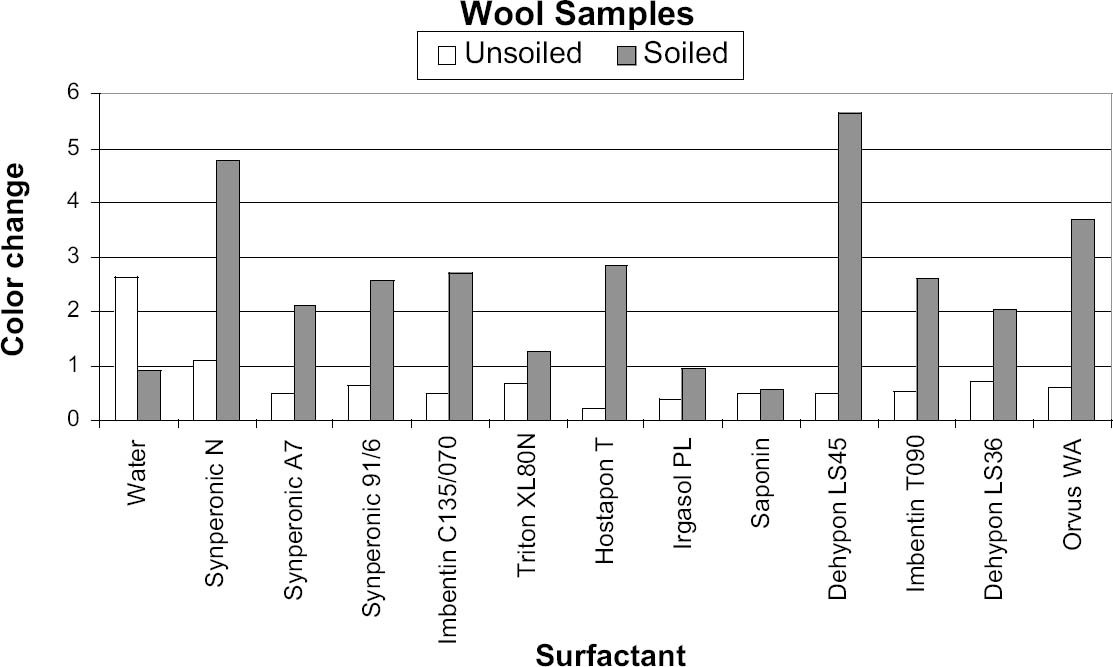FINDING SUBSTITUTE SURFACTANTS FOR SYNPERONIC N
JOHN A. FIELDS, ANDREW WINGHAM, FRANCES HARTOG, & VINCENT DANIELS
7 CONCLUSIONS FROM PHASE 1
The pH of the wash water of all the surfactants except Triton XL80N was within the ranges discussed above, and therefore Triton XL80N was eliminated from further testing because of its low wash-water pH. The conductivity of the wash water of all the surfactants was so similar that no surfactants were further eliminated on this basis.
With Triton XL80N eliminated, two members of the working group (Fields and Wingham) independently selected their best surfactants based on the color change (ΔE) before and after washing for both cotton and wool samples—those with the greatest change in ΔE for both wool and cotton. The combined list contained seven surfactants for further testing: five nonionic surfactants—Dehypon LS45 (liquid), Dehypon LS36 (liquid), Imbentin C135/070 (paste), Imbentin T090 (paste), and Synperonic 91/6 (liquid)—and two anionic surfactants—Hostapon T (powder) and Orvus WA (paste). For cotton, three surfactants—Dehypon LS45, Synperonic 91/6, and Hostapon T—proved equally most efficient at soil liberation. For wool, Dehypon LS45 was most efficient at soil liberation, followed by Hostapon T. Irgasol PL and Saponin were not brought forward for
Fig. 6.
Color change (E) results for wool samples
 |
further testing due to their poor cleaning ability. The selection process was reviewed, and the list for further testing agreed to by the rest of the group.
|